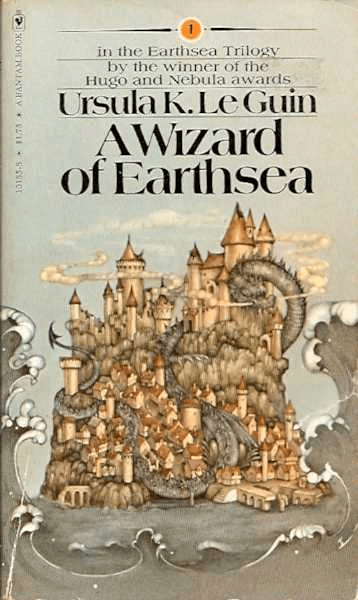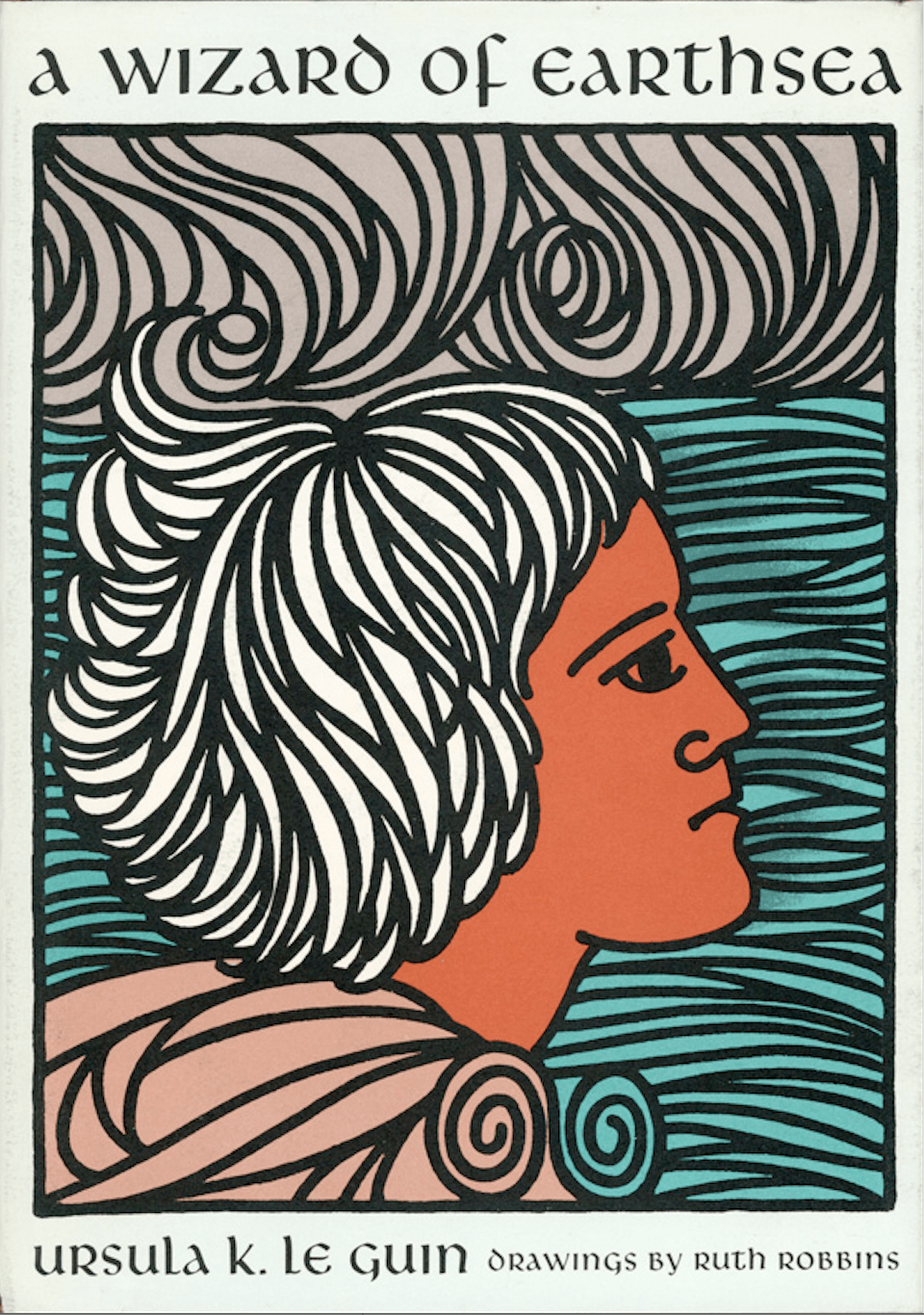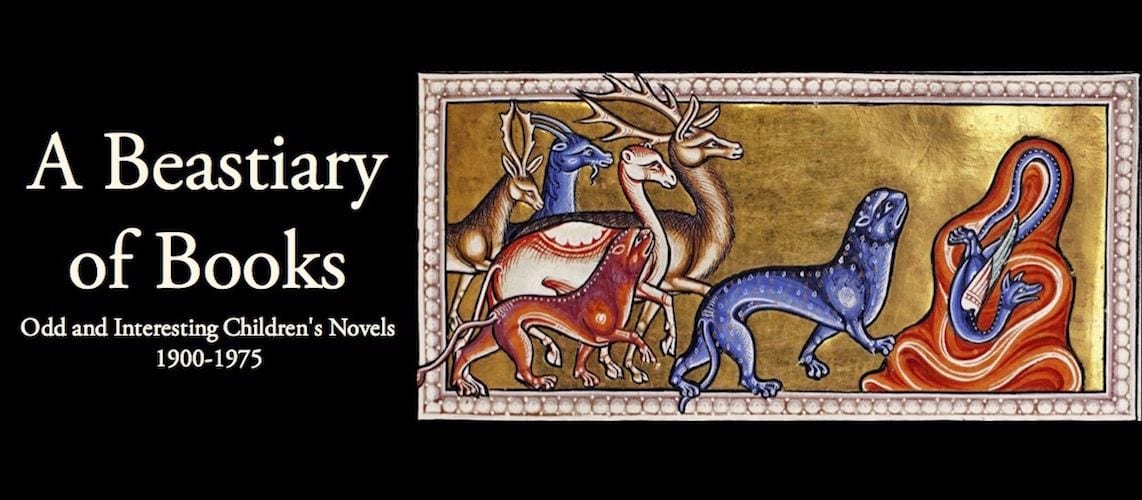 Ged (with a hard /g/) is born in a tiny village of goatherds on the mountainous island of Gont, where he shows early signs of tremendous magical power. Ged is proud, prickly, and ambitious. Instead of staying as an apprentice with the contempletive old wizard Ogion, the boy chooses to go to the wizarding school on Roke, at the center of Earthsea. There he latches on to a rich boy named Jasper as a person to hate and be rivals with, and Jasper eventually goads him into an arrogant display of power. Ged boasts that he can raise a dead spirit, and astonishingly for someone his age he succeeds; but at the same time he releases a shadow into the world. This being nearly kills Ged before fleeing from the protective spells of Roke. When Ged graduates and leaves Roke, he becomes hunted by the shadow. Eventually he realizes that he needs to stop running, and chase the thing instead. When he finally confronts it, it turns out to be a part of himself; they merge, and Ged is whole again.
Ged (with a hard /g/) is born in a tiny village of goatherds on the mountainous island of Gont, where he shows early signs of tremendous magical power. Ged is proud, prickly, and ambitious. Instead of staying as an apprentice with the contempletive old wizard Ogion, the boy chooses to go to the wizarding school on Roke, at the center of Earthsea. There he latches on to a rich boy named Jasper as a person to hate and be rivals with, and Jasper eventually goads him into an arrogant display of power. Ged boasts that he can raise a dead spirit, and astonishingly for someone his age he succeeds; but at the same time he releases a shadow into the world. This being nearly kills Ged before fleeing from the protective spells of Roke. When Ged graduates and leaves Roke, he becomes hunted by the shadow. Eventually he realizes that he needs to stop running, and chase the thing instead. When he finally confronts it, it turns out to be a part of himself; they merge, and Ged is whole again.
This is an emotionally complicated book. Ged is insufferable, but he is also right: he really is better at what he does than almost anyone. Before he can attain something of the peace and wisdom of Ogion, Ged has to have the vibrant aggression of youth knocked out of him by life. He is a loner with only one real friend, a fellow-student named Vetch who goes with him on his final journey pursuing the shadow. (Similar brilliant loner characters occur in Le Guin’s Very Far Away from Anywhere Else and The Dispossessed.)
In some respects, this book has not aged well. Stilted archaic language to imply profundity has gone out of fashion, and today comes off as an affectation. In addition, wizarding in Earthsea is an all-boys club, with Roke resembling Oxford in the 19th century. LeGuin has written about how male characters tend to take over if you let them. It’s sad the she was unable to envision women as part of the serious, strange endeavor that is wizarding in Earthsea. (She ammended this in later books, but it is clearly a retro-fit.)
 But LeGuin also rose noticably above the usual pack of ancient-culture-inspired fantasy, possibly because she was the child of anthropologists. (Her mother, Theodora Kroeber, wrote Ishi in Two Worlds.) LeGuin’s world-building has the imperfections that occur in real human cultures, to an extent that is unusual in the fantasy genre. This shows particularly in the second Earthsea book, The Tombs of Atuan.
But LeGuin also rose noticably above the usual pack of ancient-culture-inspired fantasy, possibly because she was the child of anthropologists. (Her mother, Theodora Kroeber, wrote Ishi in Two Worlds.) LeGuin’s world-building has the imperfections that occur in real human cultures, to an extent that is unusual in the fantasy genre. This shows particularly in the second Earthsea book, The Tombs of Atuan.

 LeGuin also gets props for creating a world where the people aren’t white, without making a big fanfare of it. Ged’s people have brown skin, and Vetch is from a region where people’s skin is so dark it is almost black. LeGuin had to fight with her publishers to not have Ged shown with white skin on the cover, though I think the peachy tone they chose still “reads” as white. I prefer the picture of Ged on the back cover of the 1970’s paperback.
LeGuin also gets props for creating a world where the people aren’t white, without making a big fanfare of it. Ged’s people have brown skin, and Vetch is from a region where people’s skin is so dark it is almost black. LeGuin had to fight with her publishers to not have Ged shown with white skin on the cover, though I think the peachy tone they chose still “reads” as white. I prefer the picture of Ged on the back cover of the 1970’s paperback.

Although I read this when I was about 12, I never thought of it as a kids book because I got it from my brothers, who were young adults at the time. I stole all their books (after they were finished) because it felt grown up to read their grown up books…. Like the EarthSea series & LOTR.
Yeah, it’s really kinda not a kid’s book. It’s strange that it got marketed as one.